-
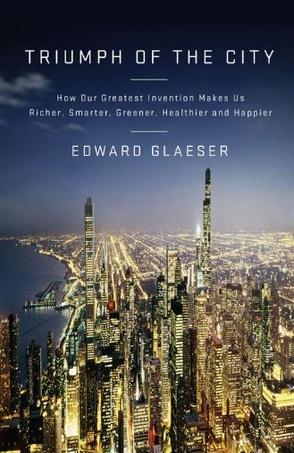
Triumph of the City
A pioneering urban economist offers fascinating, even inspiring proof that the city is humanity's greatest invention and our best hope for the future. America is an urban nation. More than two thirds of us live on the 3 percent of land that contains our cities. Yet cities get a bad rap: they're dirty, poor, unhealthy, crime ridden, expensive, environmentally unfriendly... Or are they? As Edward Glaeser proves in this myth-shattering book, cities are actually the healthiest, greenest, and richest (in cultural and economic terms) places to live. New Yorkers, for instance, live longer than other Americans; heart disease and cancer rates are lower in Gotham than in the nation as a whole. More than half of America's income is earned in twenty-two metropolitan areas. And city dwellers use, on average, 40 percent less energy than suburbanites. Glaeser travels through history and around the globe to reveal the hidden workings of cities and how they bring out the best in humankind. Even the worst cities-Kinshasa, Kolkata, Lagos- confer surprising benefits on the people who flock to them, including better health and more jobs than the rural areas that surround them. Glaeser visits Bangalore and Silicon Valley, whose strangely similar histories prove how essential education is to urban success and how new technology actually encourages people to gather together physically. He discovers why Detroit is dying while other old industrial cities-Chicago, Boston, New York-thrive. He investigates why a new house costs 350 percent more in Los Angeles than in Houston, even though building costs are only 25 percent higher in L.A. He pinpoints the single factor that most influences urban growth-January temperatures-and explains how certain chilly cities manage to defy that link. He explains how West Coast environmentalists have harmed the environment, and how struggling cities from Youngstown to New Orleans can "shrink to greatness." And he exposes the dangerous anti-urban political bias that is harming both cities and the entire country. Using intrepid reportage, keen analysis, and eloquent argument, Glaeser makes an impassioned case for the city's import and splendor. He reminds us forcefully why we should nurture our cities or suffer consequences that will hurt us all, no matter where we live. -
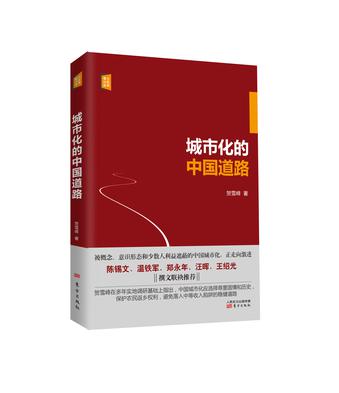
城市化的中国道路
城市化俨然已成为中国改革与发展中的关键词,它一头连着土地制度和户籍制度,另一头连着经济转型和就业。因此,中国城市化道路的选择,是事关国家发展道路的战略问题。 遗憾的是,由于概念、意识形态以及少数人利益的遮蔽,中国城市化正走向激进。本书试图在尊重历史与国情的基础上,从另一个视角观察、解读中国城市化的真实现场及其背后的制度安排,提出一条保护农民返乡权利,避免中国落入中等收入陷阱的稳健的城市化道路。 -
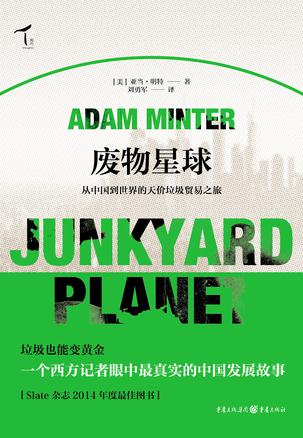
废物星球
· 《废物星球:从中国到世界的天价垃圾贸易之旅》 讲述真实却意想不到的中国故事, 揭秘一个人人参与却被人人忽略的“影子行业”: 我们在那些熟悉又陌生的故事里,可以看到 垃圾回收如何在中国和世界都隐秘而茁壮成长到惊人的地步, 如何影响着全球的经济、人文和环境, 又如何影响着中国在世界的位置。 还可以看到 我们手中的废品, 如何因为浪费或者回收,对环境和经济产生巨大的影响 我们需要反思 在节制与浪费之间,在环保与发展之间,真正的平衡点在哪里? 本书作者亚当·明特出身废品回收世家,以驻中国记者身份在上海生活了16年,并执着于从中国到世界各地的垃圾旅游,被世界媒体誉为“了解这一广阔而隐秘的产业的最佳指明灯”。 互联网杂志SLATE 2014年年度榜首图书 -
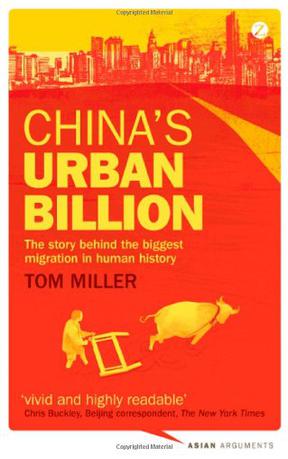
China's Urban Billion
By 2030, China's cities will be home to 1 billion people - one in every eight people on earth. What kind of lives will China's urban billion lead? And what will China's cities be like? Over the past thirty years, China's urban population expanded by 500 million people, and is on track to swell by a further 300 million by 2030. Hundreds of millions of these new urban residents are rural migrants, who lead second-class lives without access to urban benefits. Even those lucky citizens who live in modern tower blocks must put up with clogged roads, polluted skies and cityscapes of unremitting ugliness. The rapid expansion of urban China is astonishing, but new policies are urgently needed to create healthier cities. Combining on-the-ground reportage and up-to-date research, this pivotal book explains why China has failed to reap many of the economic and social benefits of urbanization, and suggests how these problems can be resolved. If its leaders get urbanization right, China will surpass the United States and cement its position as the world's largest economy. But if they get it wrong, China could spend the next twenty years languishing in middle-income torpor, its cities pockmarked by giant slums. -
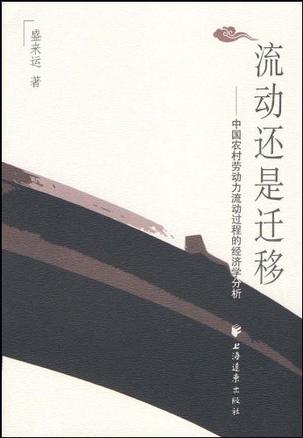
流动还是迁移
与国际上一般趋势相比,中国农村劳动力流动过程独树一帜:有流动无迁移或迁移很少;农村劳动力外出、回流和留城过程是分割的。这使得中国城市化进程严重滞后,不仅落后于工业化国家,也落后于同等发展中国家的平均水平。中国城市化滞后和农村劳动力有流动无迁移两个差异,是中国工业化和城市化特殊性的反映,也决定了中国发展模式的特殊性。中国农村劳动力流动过程为什么是分割的?在相同的制度环境下,为什么有的劳动力外出了,而有的劳动力仍留在农村?为什么有的外出劳动力回流了,而有的仍留在了城市?制度变量如何影响了劳动力流动过程?中国要不要推进劳动力流动过程和迁移过程的统一?新农村建设运动会对劳动力流动产生什么样的影响?这些问题需要深入研究。回答了这些问题,也就揭示了中国农村劳动力流动过程的特殊性和本质,揭示了中国特色的工业化、城市化和城乡统筹发展的内在要求,明确了今后改革和发展的方向。因此,本书选择中国农村劳动力流动过程作为研究重点。 主要结论 本书利用国家统计局2003-2004年农村住户抽样调查1/2的样本数据(34000户),主要对农村劳动力外出、回流和留城行为进行了实证研究,得出了一些有价值的结论。这些结论验证了理论模型的基本假设,为制定中国农村劳动力流动迁移政策提供了客观依据。主要结论有: ——无论是绝对收入还是相对收入都对农村劳动力外出、回流和留城行为产生了重要影响。家庭收入对劳动力外出的影响呈倒“U”形,在中等收入水平以前,劳动力外出的可能性与家庭收入成正比,到收入达到一定水平后,随着家庭收入的提高,家庭劳动力外出的可能性反而下降,最富的家庭和最穷的家庭一样具有相对较低的外出可能性;家庭收入对劳动力回流的影响不显著,但对留城行为的影响非常显著,富裕家庭的外出劳动力家庭负担较轻,在家庭的支持下比较容易做出留城的决定。城乡收入差距对劳动力外出的影响如新古典模型所假设的那样,收入差距越大,农民外出的动力越强,外出的可能性也越大,相应的外出劳动力回流的意愿越小。当然,收入差距越大,农民工留城的困难也越大,因为以此代表的城乡二元结构越大,城市制度壁垒越高。特别有意思的是,笔者在此验证了新经济迁移理论(NELM)所提出的“相对剥夺”的假设,即家庭收入相对地位的下降确实刺激了农民外出的可能性,降低了回流的可能性,证明了改善区域内收入分配状况的重要性。 ——无论是劳动力的外出行为还是回流行为或留城行为,都是人力资本选择的结果。人力资本迁移理论的相关假设都被显著地证明是正确的。文化程度高、年龄轻、受过培训的农村劳动力最容易外出,最不容易回流,最容易留居城市;男性劳动力比女性劳动力外出的可能性大;年龄大的劳动力和已婚女性回流的可能性大,不容易长期留在城市。因此,面向农村人口的教育和培训无论如何重视都不过分。 …… ——分析和验证了制度变量对劳动力流动行为和迁移行为的影响,重点分析了户籍制度、住房制度和土地制度的影响,得出了随着户籍制度背后的福利制度的市场化,住房制度安排逐步成为制约劳动力流动过程向迁移过程转换的最大障碍因素的结论。同时,本书还进一步探讨了中国城市“贫民窟”形成的可能性。 ——在分析迁移、城市化和发展之间关系的基础上,根据实证分析得出的结论,对新农村建设的方向问题进行了比较研究,提出了以农村劳动力流动转移为主线来设计新农村政策的设想,并根据城乡统筹的要求和研究结论,提出了加快农村劳动力流动迁移的政策建议。 但是,由于研究数据、时间和能力的制约,本书也留下了不少遗憾。主要是对回流和留城过程的分析不够深入,一些制度变量没有办法量化,由此影响了实证精度。 -
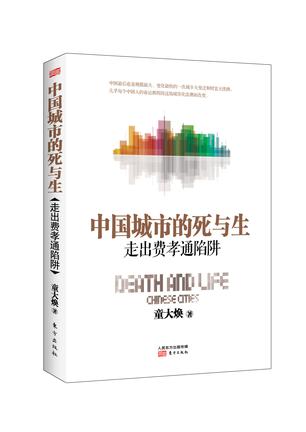
中国城市的死与生
中国最后也是规模最大、变化最快的一次城乡大变迁和财富大洗牌,几乎每个中国人的命运都将因这场城市化浪潮而改变。 中国的很多事情往往让大多数人看不懂,一边是实际城市化率才35%,很多人在抱怨城市高房价买不起房,另一边却出现大量的房屋过剩,甚至于出现几乎整座新城空置的空城、鬼城现象。 这种状况的根本原因是城市规划对于人口规模预判不准确,甚至根本无视“人聚财才聚、先有人后有城”的城市发 展规律,从政府到开发商,迷信政府力量,却不知道不符合城市和社会自身发展规律的一切行为,都会遭到规律无情的惩罚。